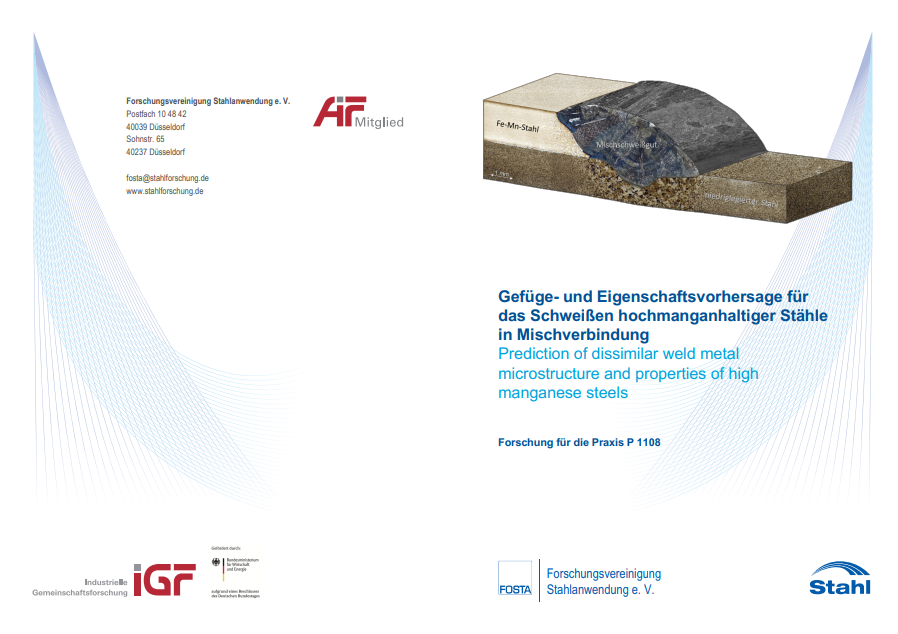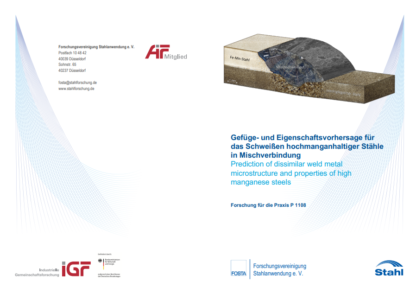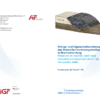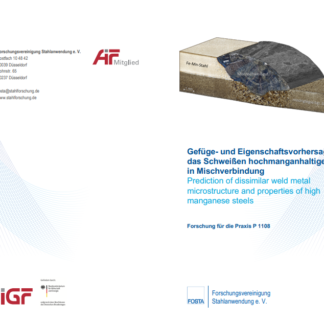Description
P 1108 – Prediction of dissimilar weld metal microstructure and properties of high manganese steels
The objective of the research project was primarily to improve the dissimilar metal welding of high manganese steels by predicting the microstructure and properties of the weld metal by means of a newly developed constitution diagram.
Three economically relevant Fe-Mn steels with different alloying concepts were used as test materials. The HC340LA (1.0548) and 22MnB5 (1.5528) steels, which are widely used in car body construction, served as joining partners, as well as various high manganese metal powder cored electrodes.
Using a TIG arc melting furnace, an arc melting method for experimental weld metal simulation was developed, which enables the production of dissimlar weld metal of any material combination in defined dilutions under GMAW adequate cooling conditions. Using this method, a large number of melting samples (dissimlar weld metal) were produced in a wide range of different chemical compositions, which were characterized in terms of type and proportion of microstructure, hardness and ferrite number. A total of eight microstructure groups were determined that can occur depending on the material combination and dilution in the dissimilar weld metal. Of particular importance are the different types of martensite ε and α’, since they are not always clearly distinguishable
metallographically, but differ considerably in their properties. The results show that the paramagnetic ε-martensite is mainly found in dissimilar weld metals having a relatively high Mn content. The α’-martensite, on the other hand, can be found in dissimilar weld metal with lower Mn contents, i. e. at higher dilutions of low-alloyed ferritic or martensitic
steel or in the use of low-alloyed filler metal. A high degree of hardness can be directly related to the formation of α’-martensite in the dissimilar weld metal samples examined here, making it necessary to differentiate between the two types of martensite.
Investigations on the influence of the cooling rate showed that a significant increase in the cooling rate has a considerable influence on the microstructure and hardness only at a few dilutions. This particularly applies to dissimilar weld metal with a very high degree of dilution of low-alloyed ferritic or martensitic steel or low-alloyed filler metal. Therefore, it can be assumed that very similar weld metal microstructures and hardness values can be expected in welding processes with higher cooling rates than in GMA welding’s (homogeneous mixing required).
Based on the experimentally simulated dissimilar weld metals and the properties determined on it, a comprehensive data set was collected. Using statistical evaluation methods, equivalents were derived that were used to plot the axes of the newly developed constitution diagram, the so-called COHMS diagram. In addition to the microstructure prediction in GMA welds, the COHMS diagram provides a rough estimation of the resulting weld metal hardness by means of HV-ISO lines.
The validation of the COHMS diagram by actual GMA welds resulted in a very good
prediction accuracy. 89 % of the GMA welds were correctly predicted. The remaining 11 % were close to the boundary lines. Investigations on the influence of the type of microstructure – in particular the martensite content – on the mechanical and technological properties of the welded joints showed that a weld metal microstructure consisting of austenite + α’-martensite is extremely critical. The tested dissimilar metal joints with this weld metal microstructure showed significantly worse strength values in comparison to the other welds, both under static and dynamic impact loads and mainly failed in the weld metal.
Main content only available in german language.
Published in:
September 2019
FOSTA – Research Association for Steel Application




